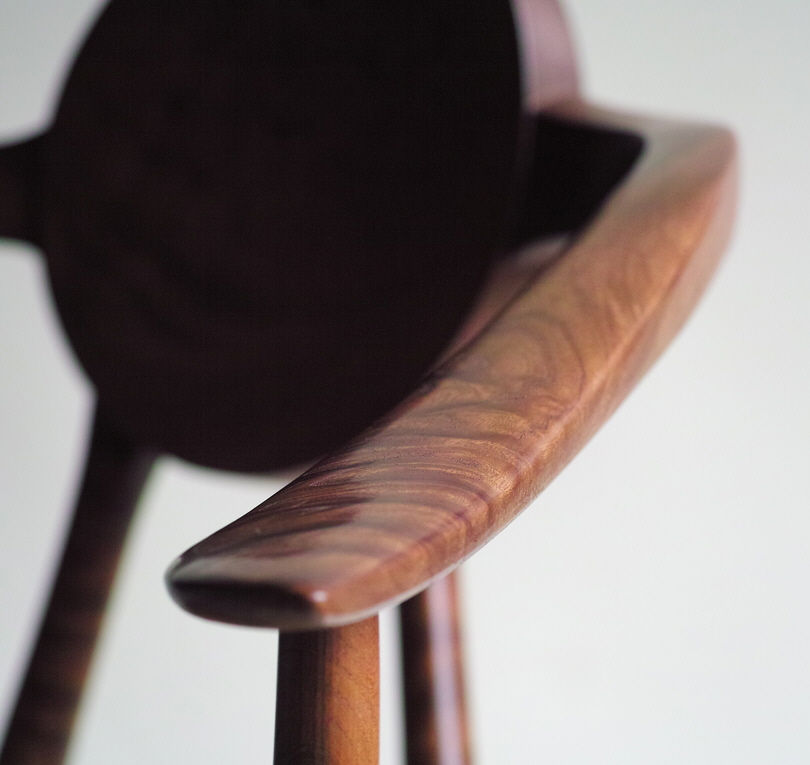
The Kanna Finish: How to Get Glass-Smooth Surfaces in Wood Without Sandpaper or Varnish
Before this man designs his furniture, he designs his tools
Sandpaper has to be the number one consumable in the modern-day furniture shop. But a subset of craftspeople, like Toshio Tokunaga and his four apprentices, don't use any of the stuff—yet are still able to achieve a glass-like finish on their furniture pieces, even absent varnish.
 Enter a caption (optional)
Enter a caption (optional)Anti-sandpaper furniture builders achieve this with handplanes and spokeshaves, or what are collectively called kanna in Japanese. While Western planes are made with cast-iron or bronze bodies, kanna are made with wooden bodies supporting the iron cutter.
 Enter a caption (optional)
Enter a caption (optional) Enter a caption (optional)
Enter a caption (optional) Enter a caption (optional)
Enter a caption (optional) Enter a caption (optional)
Enter a caption (optional)While sandpaper and kanna might seem to produce the same results to the untrained eye—or hand rubbing the surface—it's simply not true, particularly when seen at a microscopic level, or touched with sensitive fingertips.
 Enter a caption (optional)
Enter a caption (optional)As you can see, blades cut. Sandpaper tears. Thus, as Tokunaga Furniture Studio explains,
We use no sandpaper at all when crafting our furniture. Sandpaper rubs away the natural pattern of the wood, leaving behind a smoothness that is artificial and which obscures the tree's innate characteristics. In contrast to this, the kanna cuts away successive layers of wood in a way that preserves the wood's natural appearance.
Tokunaga, by the way, makes his own kanna, from the ones that do the roughing work to the ones that take the final fine shavings.
 Enter a caption (optional)
Enter a caption (optional) Enter a caption (optional)
Enter a caption (optional) Enter a caption (optional)
Enter a caption (optional) Enter a caption (optional)
Enter a caption (optional)As you can see, he's designed a staggering range of shapes. Collectively these tools can cope with every type of contour required in his work, whether flat, concave or convex.
 Enter a caption (optional)
Enter a caption (optional) Enter a caption (optional)
Enter a caption (optional) Enter a caption (optional)
Enter a caption (optional) Enter a caption (optional)
Enter a caption (optional) Enter a caption (optional)
Enter a caption (optional)Here's the team putting in the elbow grease:
 Enter a caption (optional)
Enter a caption (optional) Enter a caption (optional)
Enter a caption (optional) Enter a caption (optional)
Enter a caption (optional) Enter a caption (optional)
Enter a caption (optional) Enter a caption (optional)
Enter a caption (optional) Enter a caption (optional)
Enter a caption (optional) Enter a caption (optional)
Enter a caption (optional) Enter a caption (optional)
Enter a caption (optional) Enter a caption (optional)
Enter a caption (optional)And here's Tokunaga discussing the benefits of the kanna finish:
The blades of course require regular maintenance. Here an apprentice sharpens an iron on a waterstone.
 Enter a caption (optional)
Enter a caption (optional)Speaking of the irons, take a closer look:
 Enter a caption (optional)
Enter a caption (optional) Enter a caption (optional)
Enter a caption (optional)Those look store-bought to you? Nope, Tokunaga has them made locally. And while I hate to write this hacky, clickbaitey sentence, you really won't believe where they came from! Stay tuned.
-
o11Favorite This
-
Q7Comment
K
{Welcome
Create a Core77 Account
Already have an account? Sign In
By creating a Core77 account you confirm that you accept the Terms of Use
K
Reset Password
Please enter your email and we will send an email to reset your password.


Comments
I managed to get the video to load after a bit of buffering; apparently, the "glass-like" finish is not achieved by using the kanna alone, but by handling of the object. The video seems to imply that handling, and perhaps the impartation of oils from the touch, contributes to that glass-like finish.
http://www.finewoodworking.com/tool-guide/video/how-to-sharpen-a-card-scraper.aspx
Hey Austin,
Toshio is my girlfriend's father and I'm sure he'd be really interested in this comparison. Let me bring it up to him and see what he says! If we do find anything, we'll post it on the blog on the site so check it out every now and then!
As per the glossy finish: it does look like it had some oil or varnish, but it could also be burnished. I doubt it is just skin oil as it would not be that even all over, including the spindles. (In fact it would be kind of gross to sit a chair that is "varnished" by someone's skin oil)
check out more at their main website http://tokunagafurniture.com
I have an immense respect for Japanese woodworking, and this is one of many reasons why.
Whereas I do not doubt that this method gives a cleaner microscopic finish than even the finest sandpaper, I am still somewhat skeptical that the chair arm in the first photo (demonstrating the "glass-like finish") is unvarnished. The surface gleam and reflection are not consistent with wood that has been shaved across its grain pattern; the surface of wood, even shaved with a kanna, should be matte in texture at the microscopic level regardless of how smooth it is. The specular reflections coming off of that chair arm suggests that the pores of the wood have been filled in by some sort of finish. Also, the reflective gleam coming off the corner and lower edges of that chair arm suggests a change in the index of refraction near the surface of the wood. At the very least, that would have to have been contributed by oils imparted from the hands that touched it.
I never cease to be amazed at Japanese craftsmanship. Everything they put their hands to is pursued to perfection. Bravo.